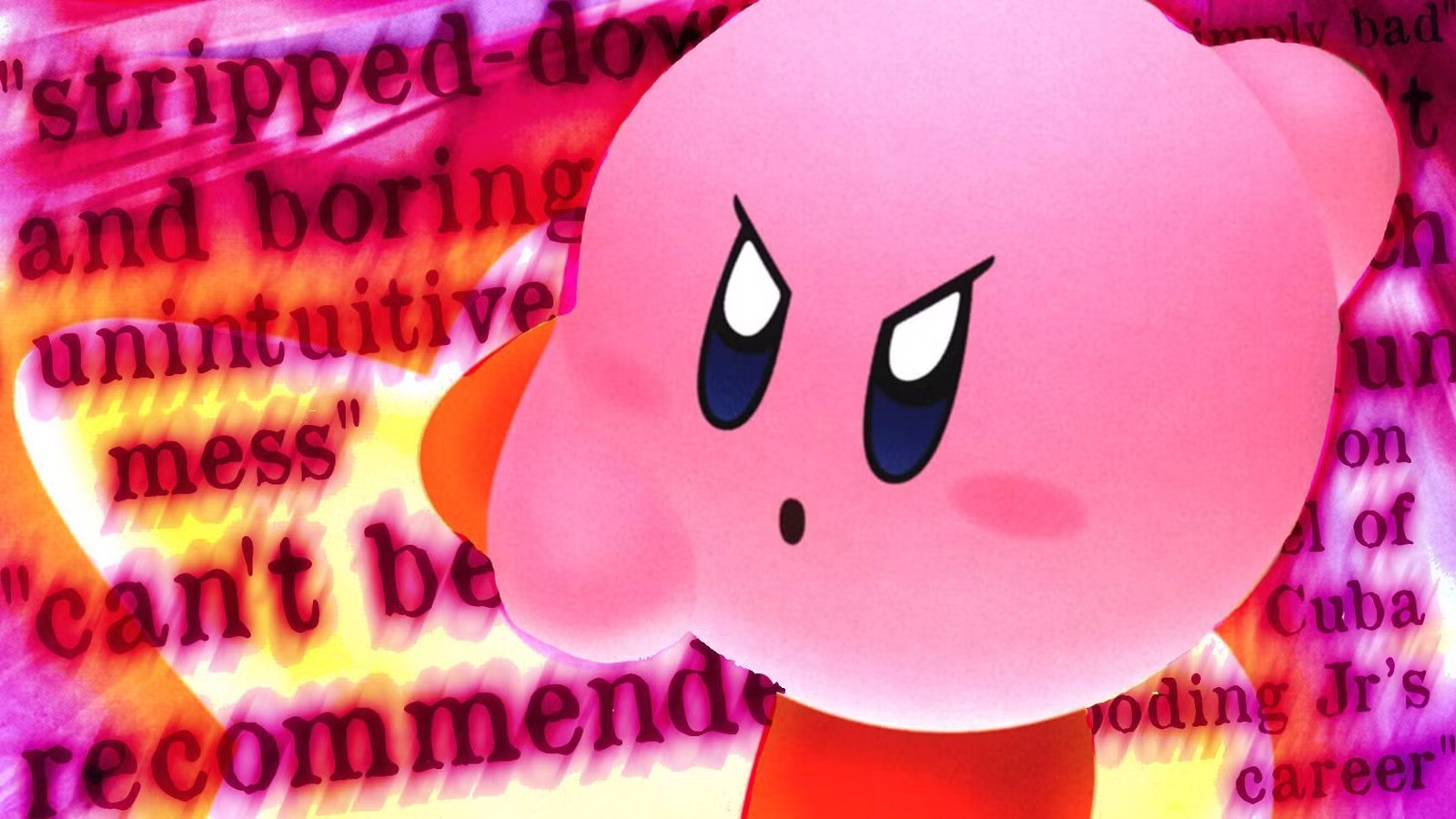The world wasn’t ready for Kirby Air Ride in 2003

On Thursday, the Nintendo Switch 2 gets its next exclusive. Kirby Air Riders will join the console’s growing library of games, alongside Hyrule Warriors: Age of Imprisonment and Donkey Kong Bananza. But it’s anything but a routine release for Nintendo; it’s a sequel that’s out to rewrite history for a critically panned cult classic.
Kirby Air Riders is a sequel to 2003’s Kirby Air Ride, a GameCube action-racing game directed by Masahiro Sakurai, the brain behind Super Smash Bros. That sounds like a slam dunk in 2025 considering that Sakurai is widely considered a visionary creator today and good will for Kirby as a character is high. But 2003 was a very different time. Critics weren’t impressed, giving Nintendo a surprising dud during an era when it was on a roll.
Today, Metacritic puts Kirby Air Ride’s review average at a 61. While it nabbed some positive marks from Nintendo Power and GamePro at release, that average is bogged down by several negative reviews at high-profile publications of the era. IGN and Gamespot awarded it a 52 and 51 respectively. 1Up and Edge went even harder on it in scathing critiques, with the former dubbing it an “unintuitive mess.”
Image: IGN via Polygon
The word “intuitive” came up a lot in reviews at the time. (In fact, it’s featured four times in IGN’s write-up.) That critique largely came from the game’s oddball one-button control scheme, where everything from boosting to inhaling enemies happened with the same input, while that button isn’t used for acceleration as vehicles accelerate automatically. IGN’s Matt Casamassina slammed that design decision at the time. “Any way you slice it — for kids or for adults — that’s simply bad design,” he wrote. “This is simple stuff, yes, but I wouldn’t call it intuitive.”
Jeff Gertsmann echoed those thoughts in his review for Gamespot. “The overly simplified gameplay really holds it back, and overall, it’s a game that really can’t be recommended to anyone, young or old,” he wrote. Gertsmann found the one-button idea “stripped-down and boring,” which was a common criticism at the time. More damning was that he disliked what has since become the game’s most memorable mode, City Trial. In it, players spend five minutes collecting stat upgrades in a small open-world area, en route to a randomly selected minigame. “As you can imagine, that really isn’t much fun, regardless of how many players you’re playing with,” Gerstmann wrote.
Some criticisms were more even-handed. In a review for G4’s X-Play that’s light on substance but heavy on hacky one-liners (“He’s sucking on the level of Cuba Gooding Jr’s career!”), Adam Sessler painted a picture of a perfectly competent kart racer with bright visual design and creative modes. But even there, he echoes the common refrain of the time: it’s just too simple. “All of this is fun, but in the end, it’s clear the game is designed for the younger set. The game is very easy and pretty much what you see here is what you’re getting,” Sessler says. “Most adults would do better to seek out deep and more challenging fare.”
All of this may sound surprising considering that Kirby Air Ride has since been elevated to cult classic status, but there’s some key context that explains its reception. Nintendo was all-in on racing games in 2003, and Kirby’s game launched between two of the company’s best. In North America, Kirby Air Ride was released on Oct. 13. That was just a few months after the critically acclaimed F-Zero GX and a few weeks before the highly anticipated Mario Kart: Double Dash!! Those two games riffed on a reliable racing formula to great effect, whereas Kirby Air Ride threw the fundamentals out the window in experimental fashion. That context was central to reviews at the time.
“If you pick up Kirby Air Ride expecting a great racing experience, you’re not going to find it, go buy F-Zero GX,” an otherwise positive review from Nintendophiles reads.
The unfortunate release date situation is similar to what happened to Titanfall 2 in 2016. The first-person shooter was sandwiched between Battlefield 1 and Call of Duty: Infinite Warfare. Even with positive buzz behind it, the mech shooter had trouble breaking through in a crowded market. It fell well below EA’s sales expectations and was relegated to a cult-classic status that has successfully rewritten its history in the gaming zeitgeist. Kirby Air Riders could do the same for Kirby Air Ride, if critics change their tune.
There’s good reason to think they could. There’s a greater appreciation for Sakurai’s style of game floating in the ether following the Switch’s workhorse Super Smash Bros. Ultimate. Similarly, the beloved Kirby and the Forgotten Land has helped push Nintendo’s mascot to new levels of good will in the past few years. But what’s even more crucial is a reversal of fortune when it comes to context. Kirby Air Ride was the opening act for the beloved Mario Kart: Double Dash!! In 2003; Kirby Air Riders will instead follow up the divisive Mario Kart World. The kart racer has its fair share of miffed fans who have voiced criticism over the way that game changes the format of tracks and races to fit an open-world structure. There’s a hunger for a good alternative, and that’s something that’s helped Sonic Racing: CrossWorlds move up the podium.
Even if Kirby Air Riders doesn’t end up changing much about its panned predecessor, the context its launching in could significantly impact the way it’s received. Maybe the world just wasn’t ready for Kirby Air Ride in 2003. It very well could be this week.




